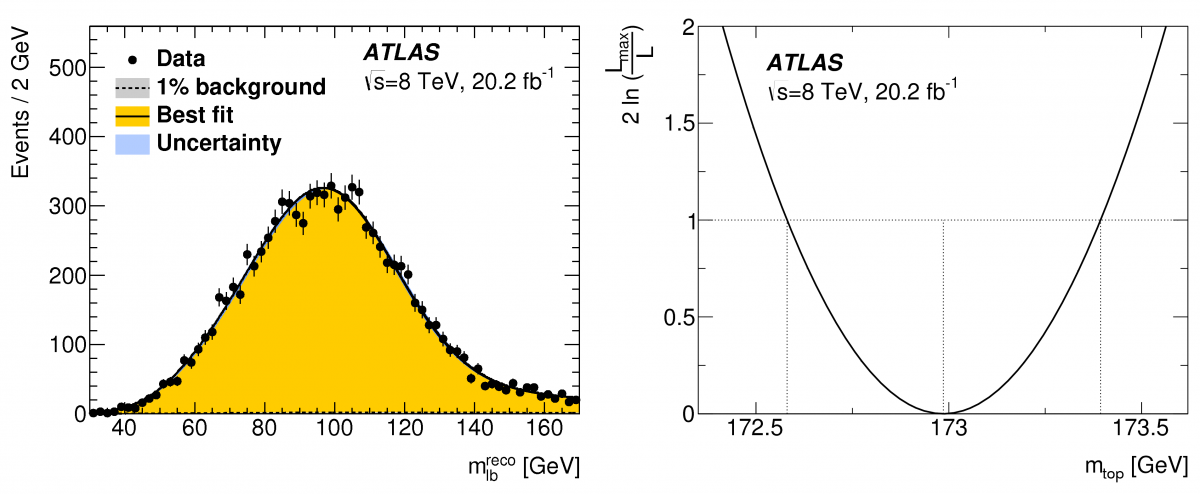Access to Collaboration Site and Physics Results

The top quark sits uneasily in the zoo of elementary particles. With a mass of about 173 giga-electronvolts (GeV), it is as heavy as an atom of gold, and has 40 times the mass of its partner, the bottom quark. The Standard Model makes precise predictions of the relationship between the top quark, W, Z and Higgs boson masses, and any deviations from this pattern could hint at new particles or phenomena.
Once produced in LHC proton-proton collisions, the top quark decays in less than a billionth of a second into an electron or muon, a neutrino, and b quark that in turn gives rise to a striking ‘jet’ of particles in the detector. To measure its mass, physicists select recorded events with a pair of such top quark decays and attempt to piece together the top quarks from the measured decay products.
This result was combined with earlier analyses of 2011 data samples to produce one of the most precise top mass measurements to date.
In this new analysis, around 9000 such events were selected from the complete ATLAS dataset recorded in 2012 and were used to measure the top quark mass with a relative uncertainty of only 0.49%. These ‘dileptonic’ events, in which each top quark decay involves a neutrino, are particularly challenging to reconstruct, as neutrinos escape from the ATLAS detector without trace. So instead, the analysis reconstructed the combined mass of the lepton (electron and muon) and b-jet only (Figure 1a). Thanks to a thorough understanding of the physics processes involved in top quark decay, and precise knowledge of the performance of the ATLAS detector achieved over the last few years, this information alone is enough to determine the top quark mass which best matches the data (Figure 1b).
This result was combined with earlier analyses of 2011 data samples to produce one of the most precise top mass measurements to date: 172.84±0.70 GeV (a relative uncertainty of 0.40%). Further analysis of the even larger Run 2 data samples now being accumulated should allow the measurement of this important fundamental parameter to be even further improved, perhaps shedding more light on the top quark’s mysterious nature.
Links
- Measurement of the top quark mass in the tt-→ dilepton channel from 8 TeV ATLAS data (arXiv: 1606.02179): http://arxiv.org/abs/1606.02179








